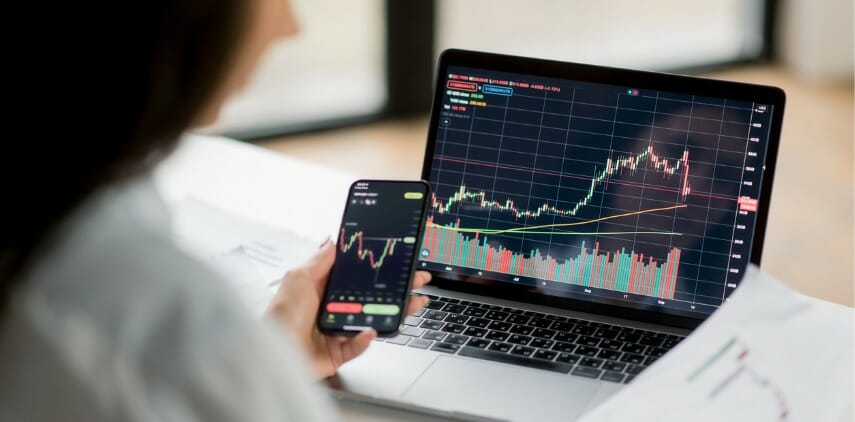If you invest in commodities such as steel and aluminum, it’s vital to understand how commodity price changes affect your investment. Commodity risk, or commodity price risk, refers to the risk you take as a commodity buyer on your investment’s price changing, often unexpectedly.
Price increases and decreases can be due to several factors, such as natural disasters, inflation, or political instability in producing countries. Depending on the investment product, companies and individuals that rely on commodity investments for their portfolios can lose money without an effective management strategy.
Learn the basics of commodity risk and how to protect your investment portfolio in a volatile market.
What is a Commodity Price Risk?
Commodity price risk is the possibility that the price of a commodity will change unexpectedly, often resulting in losses for producers or buyers of that commodity. High commodity prices can adversely affect buyers, while low prices cause producers losses.
If your business depends on raw materials like wood, grains, steel, copper, iron, or gas, you face this risk daily. Businesses risk their daily and monthly production when they invest in raw materials for their portfolios. Many companies must invest in commodities since their business thrives off a certain good or service.
For example, crude oil futures markets fell 3% in 2022, causing those relying on profits from the sale of oil in Europe and the Middle East to suffer losses. However, crude oil future results in the U.S. are predicted to increase, indicating a boom for the American economy.
Most Common Commodities Traded On Global Markets
Today’s most common commodities traded on global markets are usually the raw material to create a wide range of products in numerous industries. The majority of top commodities are the natural materials of things we use each day. The top ten traded commodities are:
- Cotton
- Wheat
- Corn
- Sugar
- Silver
- Brent Oil
- Gold
- Natural Gas
- Coffee
- Crude Oil
What Causes Commodity Price Fluctuations?
Causes of commodity price fluctuations include inflation, weather, politics, market conditions, and technology.
Often investments are subject to inflationary pressures and fluctuation. As the cost of goods and services increases, the prices of goods also tend to go up. Since inflation can significantly impact the value of your investments in a particular product, it is one of the key factors investors need to consider when deciding where to put their money.
Weather conditions often affect the production of agricultural goods. Products such as wheat and corn are susceptible to changes in precipitation, and crop failures can lead to sharp decreases in prices. This risk is difficult to predict and manage but is a risk many try to take.
Political factors also affect commodity prices and risk. For example, former President Donald Trump imposed tariffs in 2018 that increased prices of aluminum and steel in the U.S. Additionally, the Russian war in Ukraine caused wheat prices to rise across Europe. When the two countries agreed to grain shipment terms, the prices fell 3%.
Technological advancements can also impact commodity prices. For example, advanced drilling technology has affected the price of copper in Sweden because it is more readily available than in the past.
What Factors Should You Consider When Assessing a Particular Investment?
When assessing commodity risk for an investment, there are vital factors that you should consider. Whether investing in energy, agriculture, or metals, you take a level of risk.
Production and quantity risk associated with the commodity includes considering factors such as the availability of resources and the stability of the supply chain. Along with production, the demand risk is related to the item. The demand may include factors such as the potential for substitution and changes in consumer preferences.
The financial risk associated with any investment includes considering other factors, such as the volatility of prices and the availability of hedging instruments.
How Can You Protect Yourself From Commodity Risk in Your Investment Portfolio?
As an investor, you want your assets to increase in value to create a long-term investment opportunity. But trading in commodities isn’t without risk. There are a few ways to protect yourself from the risks associated with commodities.
Diversify Your Portfolio
One of the best ways to protect yourself is to invest in several assets in various industries. If one commodity’s price drops, you will have other commodities to fall back on. Invest in multiple commodities, such as agricultural and industrial goods, to ensure you don’t lose everything if one commodity fluctuates.
Invest in Commodity-Related ETFs
Commodity ETFs are exchange-traded funds that expose the price changes of raw materials, like metals, natural resources, or agricultural goods. Commodity ETFs allow investors to create exposure to commodities in a low-risk, cost-effective, and simple way.
Some commodity ETFs focus on a single commodity, holding it in physical storage or future contract investments. Other ETFs track the performance of a commodity index that includes dozens of individual commodities.
Use Future Contracts to Hedge Against Commodity Risk
Hedging is a way to reduce the risk of a commodity. One strategy to reduce risk is to buy commodity futures and options. Futures contracts are agreements to buy or sell a commodity at a set price in the future. If the cost of the item goes down, you can offset some of your losses by selling your futures contract.
Understand the Financial Risk of Commodities Investing With Finance is us
Investors can do a few things to minimize risk and maximize returns when trading their commodities. Ultimately, whether or not you choose to invest in certain products or brands will depend on your appetite for risk. However, if you carefully diversify your risks, you can profit from commodity price fluctuations.
Learn more about rookie investing mistakes and how to choose excellent opportunities to boost your portfolio at Finance is us.
Disclaimer: All content on this site is information of a general nature and does not address the circumstances of any particular entity or individual, nor is the information a substitute for professional financial advice and services.














